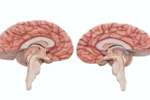When you think of football, what comes to mind? A favorite team or player, tailgates, watch parties, good food, exciting victories, or frustrating plays? When you enjoy the entertainment and the hype of a football game, do you ever pause to consider how dangerous it is? When your favorite player takes a hard hit, are you bothered if he is taken out of the game? The NFL has received a lot of media attention recently as medical professionals, players, and their families recognize the danger of sports-related head trauma resulting in ongoing changes to make the game safer.
The Rules Of Concussions
A concussion occurs when your brain is exposed to an abrupt force that causes it to experience even minor, temporary dysfunction. Typically, our brain is protected by the cerebrospinal fluid between the brain and the skull, but if we encounter a forceful hit to our head, neck, or upper body, it may not be adequate to fully protect a brain from an injury. After such an injury, the following are some symptoms of a concussion that can even last for several weeks or longer after the impact:
- Headache
- Loss of memory, especially details regarding the incident
- Confusion
- Dizziness
- Momentary loss of consciousness
- Nausea
- Vomiting
- Fatigue
For anyone who has experienced a concussion, whether a professional athlete or a child on a playground, current guidelines recommend that all activity or athletic play where energy is exerted need to cease until the symptoms are no longer present. Initially, someone with significant symptoms may need to rest quietly in a low light environment and even cease mentally challenging activity until the concussive symptoms subside, with a gradual activity increase as tolerated with no return of symptoms.
Head Trauma In The NFL
Rules have changed and continue to change in the NFL to make sure that players with possible concussions are removed from play immediately and properly evaluated. Now, teams face fines up to $150,000 if they allow a potentially concussed player to continue playing. A study was completed recently by researchers from Boston University and VA Boston Healthcare System that analyzed 202 brains donated by the families of deceased former professional football players. They discovered that 88% of these brains had chronic traumatic encephalopathy (CTE). CTE is a degenerative brain disease caused by head trauma including repetitive concussions. The repetitive brain trauma produces degeneration of healthy brain tissue and the buildup of an abnormal protein. CTE is a progressive disease that can appear months, years, or even decades after the last incident of head trauma or after an athletic career has ended. Symptoms of CTE include memory loss, confusion, impaired judgment, depression, aggression, dementia, and suicidal thoughts. The NFL is aggressively pursuing research into concussion as well as best practices for concussion recognition and treatment.
Football players knowingly put themselves in danger during every play of the game, so it’s important that physicians, trainers, and coaches on the sidelines provide monitoring, evaluation, and protection for the players. With a commitment to make the game safer for each player, the NFL now places a neurological specialist on the each sideline for every NFL game. We are proud that two of our very own doctors at NewSouth NeuroSpine, Dr. John Davis and Dr. Jack Moriarity, have joined the NFL’s designated medical staff of Unaffiliated Neurotrauma Consultants to oversee the evaluation of any player suspected to have suffered a concussion. Thank you, Dr. Davis and Dr. Moriarity, for your dedication to keep the game of football safe!






